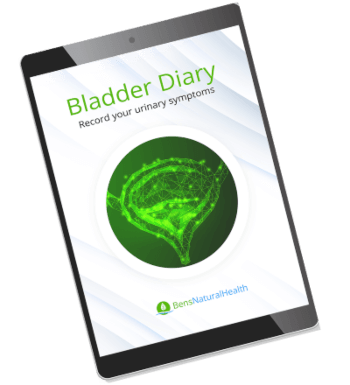- Common Side Effects of Doxycycline
- Rare and Severe Side Effects of Doxycycline
- How Long Doxycycline’s Side Effects Last?
- Are There Any Long-Term Side Effects of Doxycycline?
- Why Can't You Lie Down After Taking Doxycycline?
- Doxycycline Warnings and Precautions
- What Are The Side Effects of Stopping Doxycycline?
- Conclusion
- Source
Doxycycline is an antibiotic that belongs to the group of drugs called tetracyclines.
Doxycycline is used to treat infections such as UTIs, chest, skin, and dental infections, and sexually transmitted infections (STIs).
Although doxycycline has several uses, it is also associated with a few side effects.
Read on to understand the potential side effects of doxycycline and ways to manage them.
Common Side Effects of Doxycycline
1) Digestive disturbances
Digestive disturbances are the most commonly reported side effects of doxycycline.
Symptoms of digestive disturbances are usually mild and include nausea (4 to 33%), vomiting (4 to 8%), diarrhea (6 to 7.5%), and abdominal pain (12 to 33%).
Some patients may experience diarrhea with stomach cramps. If severe or lasting more than four days, consult your healthcare provider.
How to reduce digestive discomfort
Drinking more water can often help to relieve dehydration associated with severe diarrhea.
In addition, it is advisable to take doses of doxycycline after meals to avoid gastric irritation.
Research suggests that taking this medication with food may reduce the likelihood of nausea and vomiting.
Avoid eating high-fat foods while using doxycycline to reduce the risk of developing these adverse effects.
It’s also advisable to avoid alcohol while taking doxycycline.
2) Photosensitivity
The term photosensitivity refers to an increased sensitivity to sunlight.
Some common symptoms of photosensitivity include intense redness of the skin, rashes, and the appearance of bumps.
People with lighter complexions are more likely to experience photosensitivity while using doxycycline.
How to reduce photosensitivity
It is recommended to minimize sun exposure and use appropriate protective measures when in the sun to prevent photosensitivity.
3) Esophageal ulcer
Pain or difficulty in swallowing is one of the common side effects of doxycycline. These symptoms occur as a result of inflammation and ulceration in the esophagus and are accompanied by acid reflux, a sore throat, and reduced appetite.
Some patients also complain of chest pain that becomes worse after eating.
How to reduce your risk of this side effect
Some effective ways to reduce inflammation and ulceration in the esophagus include:
- Discontinuing doxycycline.
- Use antacids to prevent further damage to the esophageal mucosa by the acidic secretions in the stomach.
- Consume soothing foods such as honey or aloe vera juice.
- Avoid the intake of hot or warm foods, as it might irritate the esophagus further.
4) Unusual bruising or bleeding
Doxycycline may cause unusual bruising and bleeding, such as nosebleeds.
These side effects are usually accompanied by other symptoms such as a sore throat, feeling tired or generally unwell, and high temperature.
It is advisable to contact your doctor right away if you notice these side effects, as these could be associated with blood-related abnormalities.
5) Pain in the muscles and joints
It is common for patients to experience pain and stiffness in the muscles and joints within 2 to 3 days of starting the treatment with doxycycline. It is a mild and short-lasting side effect.
How to relieve muscle and joint pain
Some effective ways that can help relieve pain in the muscles and joints include:
- Using hot compresses
- Taking adequate rest
- Increasing your water intake
Get your FREE bladder diary
- Daily bladder diary
- Better understand your urinary symptoms
- Step-by-step guide
Rare and Severe Side Effects of Doxycycline
1) Liver toxicity and injury
Doxycycline may impact liver function, potentially causing liver toxicity. Some common side effects associated with liver problems include passing dark-colored urine and yellowish discoloration of the whites of the eyes, nails, and skin.
Doxycycline is also associated with rare events of hepatic injury arising within 1 or 2 weeks of starting the treatment.
Hepatic injury and toxicity can occur even in patients who have not reported any side effects when the same medication was used in the past.
Hepatic injury onset is often sudden, accompanied by signs like skin rash, fever, and eosinophilia.
Recovering from hepatic injury
Patients should be aware of the early warning signs of hepatic toxicity and consult their doctor immediately in case they notice any symptoms.
They might be advised to stop the medication in order to avoid further decline in hepatic functions. The recovery is rapid once the medication is stopped.
The patients usually recover completely within 4 to 6 weeks, although instances of prolonged severe liver injury may occur in some cases.
2) Intracranial hypertension
Intracranial hypertension is one of the rare but serious side effects associated with doxycycline.
The term intracranial hypertension refers to the rise in the pressure around the brain. Some common signs of intracranial hypertension include severe headaches, vomiting, and changes in vision.
Intracranial hypertension, if not managed properly, can lead to serious complications. Hence, it is advisable to stop using doxycycline if you notice any signs of intracranial hypertension, such as severe headaches, vomiting, and changes in vision, such as double vision.
3) Photo-onycholysis
Some patients notice a fingernail coming away from its base within a few days of using Doxycycline. This peculiar symptom is called photo-onycholysis.
Doxycycline-induced photo-onycholysis is a rare event that is usually triggered following prolonged exposure to the sun.
In most cases, photo-onycholysis occurs within a few days of using this medication, but some patients develop this side effect several weeks after they have stopped using it.
Managing photo-onycholysis
One of the most effective ways to avoid doxycycline-induced photo-onycholysis is to avoid sun exposure. If you develop photo-onycholysis, you might need to discontinue the drug.
Some effective ways to manage photo-onycholysis include:
- Avoid trauma.
- Cut your nails as short as possible.
- Minimize contact with irritating products.
- Keep your nails dry.
- Avoid prolonged contact with water.
4) Pancreatitis
Severe pain and cramps in the stomach, nausea, and vomiting can be the signs of pancreatitis (inflammation of the pancreas).
These symptoms sometimes occur with blood-stained diarrhea. In severe cases, patients develop more serious symptoms such as altered mental state.
If you develop signs of pancreatitis, you must consult your physician as soon as possible.
In addition to stopping doxycycline, you might need additional treatments to manage pancreatitis.
The treatment usually includes oral or injectable medication to reduce inflammation. Patients usually recover from pancreatitis within 2 to 4 weeks once appropriate therapy is initiated.
5) Allergic reaction to doxycycline
In rare cases, doxycycline may cause a serious allergic reaction. Some common symptoms of an allergic reaction include:
- Swelling of the lips, mouth, and throat
- Difficulty breathing
- Skin rashes
- Itchy skin
Some patients also experience wheezing and tightness in the chest.
Patients who develop an allergic reaction to doxycycline should stop using the medication.
Additional treatments, such as oral antihistamine drugs, can be used to relieve the mild symptoms of allergy.
Patients who experience an allergic reaction to doxycycline should avoid using this medication in the future.
How Long Doxycycline’s Side Effects Last?
In most cases, the digestive side effects of doxycycline resolve within a few days of discontinuing the medication.
The symptoms of an allergic reaction usually resolve within a few minutes or hours once appropriate anti-allergy medication is given.
However, the side effects affecting the vital organs, such as the brain and liver, may persist for longer.
Early detection and prompt treatment of adverse events is, hence, essential for supporting faster recovery.

Are There Any Long-Term Side Effects of Doxycycline?
Yes, doxycycline may cause a few long-term side effects. For example, doxycycline has the ability to stick to calcium and accumulate in the growing bones and teeth of children. This can stain the child’s teeth.
However, these side effects are noted only in developing bones and teeth. Hence, this drug is usually not prescribed to young children or women who are pregnant or planning a pregnancy.
Why Can’t You Lie Down After Taking Doxycycline?
You cannot lie down after taking doxycycline because the pill can reflux back from your stomach into the esophagus, causing irritation, inflammation, and ulceration of the lining of the esophagus.
Hence, you should take doxycycline at least 1 hour before bedtime and avoid lying down immediately after taking the doses.
Doxycycline Warnings and Precautions
Drug Interactions with Doxycycline
Some medicines can cause severe drug interactions when used with doxycycline. Hence, before taking doxycycline, inform your doctor if you are taking any of these medicines:
- Stomach ulcer medicines containing bismuth
- Any other antibiotic, like rifampicin
- Medicines for acne containing some form of vitamin A, like isotretinoin
- Medicines that prevent blood clotting, such as warfarin
Allergies
Patients with a history of an allergic reaction to doxycycline should refrain from using this drug.
Interaction with Oral Typhoid Vaccine
Doxycycline may interfere with the action of the typhoid vaccine given orally. Hence, if you need to take a typhoid vaccine while using doxycycline, consider taking an injectable vaccine.
Pregnancy and Breastfeeding
Doxycycline is not recommended for pregnant women as it can affect the development of teeth and bones in the baby.
Doxycycline is unlikely to cause any severe side effects in the baby when used by the breastfeeding mother for a short time.
Yet, breastfeeding women should refrain from using this medication unless advised by a physician.
When administered to a baby directly, doxycycline may affect the development of the teeth and bones of the child.
Certain Medical Conditions
The use of this drug is contraindicated for patients having serious kidney or liver disorders, inflamed food pipe (esophagitis), or autoimmune diseases such as lupus or myasthenia gravis.
What Are The Side Effects of Stopping Doxycycline?
Most patients do not experience any serious side effects after stopping doxycycline. However, if you are taking doxycycline for the treatment of rosacea, the symptoms of this condition may return when you stop using it.
Also, if you stop taking doxycycline suddenly or do not take any alternative antibiotic, your infection might persist or flare up.
If you are taking doxycycline for malaria prevention, you will not be protected against this infection after stopping.
Conclusion
Being aware of the common side effects associated with doxycycline can help you make informed decisions about how to avoid or manage the adverse effects and whether to seek alternative therapies to manage your conditions.
Explore More

D-Mannose for UTI: How It Works, Benefits, Uses, Side Effects.







